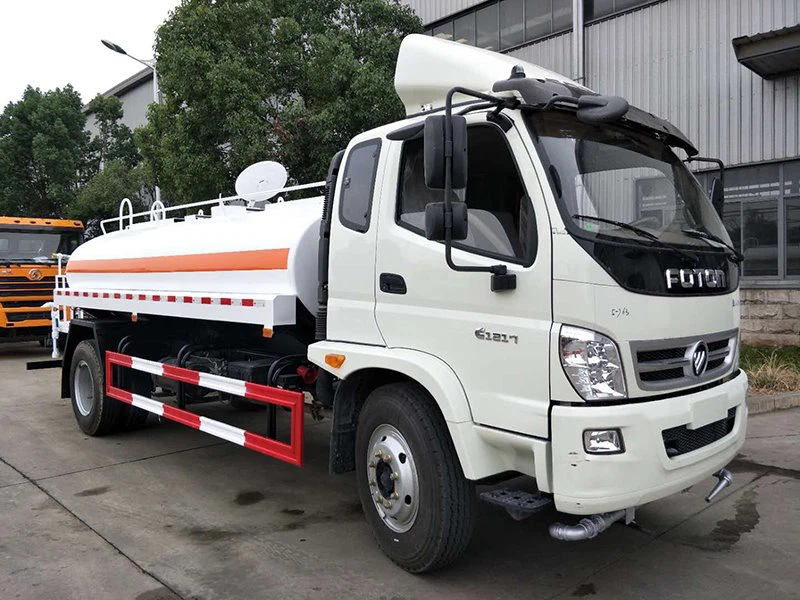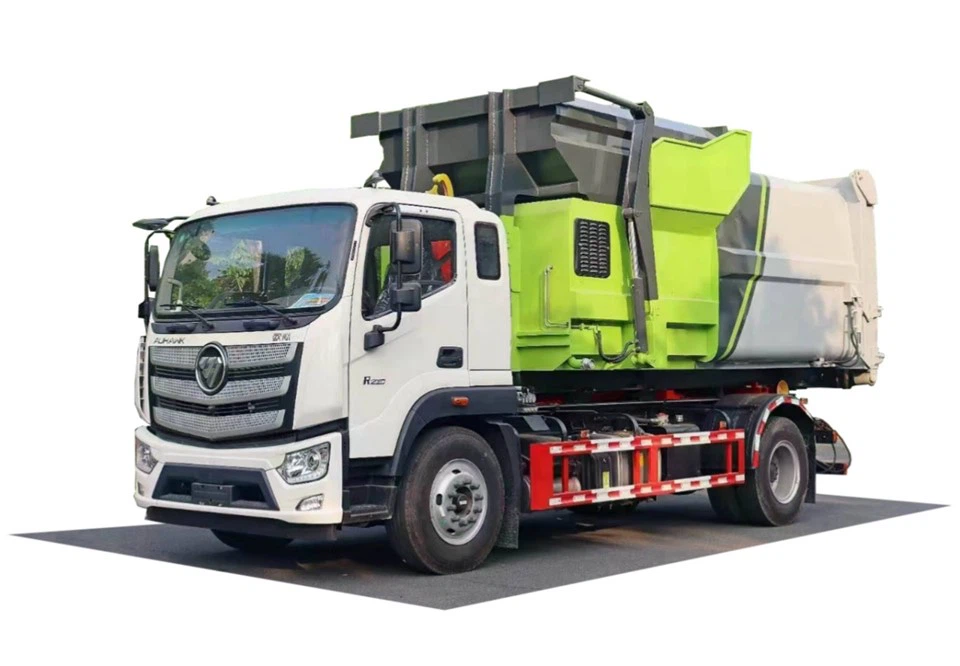The 2007 Freightliner: A Comprehensive Guide to Performance, Features, and Maintenance

The 2007 Freightliner is a well-known name in the trucking industry, recognized for its robust design, high performance, and durability. As truck enthusiasts and owners look back at this model, it becomes essential to explore its features, specifications, common issues, and overall reputation. This article serves as a comprehensive guide to the 2007 Freightliner, providing you with insights into why it’s a preferred choice among truckers and fleet managers alike.
Overview of the 2007 Freightliner
The 2007 Freightliner is part of the Freightliner Cascadia series, established to meet the demands of long-haul trucking. With advanced engineering and a focus on efficiency, this truck has made a significant impact since its release.

Specifications of 2007 Freightliner
| Feature | Details |
|---|---|
| Engine Options | Detroit Diesel Series 60, Cummins ISX |
| Horsepower | 400 – 600 HP |
| Transmission Options | 10-speed, 13-speed, 18-speed manual and automatic options |
| Gross Vehicle Weight Rating (GVWR) | Up to 80,000 lbs |
| Fuel Tank Capacity | 100 to 150 gallons |
| Cab Styles | Day cab, Sleeper cab |
Key Features of the 2007 Freightliner
The 2007 Freightliner stands out due to several feature enhancements that cater to driver comfort and operational efficiency:
- Fuel Efficiency: The aerodynamics of the Cascadia design significantly reduce drag, aiding in fuel consumption optimization.
- Comfort Features: Spacious interiors with ergonomic seating ensure a comfortable driving experience over long distances.
- Advanced Technology: Equipped with predictive cruise control and electronic stability control, enhancing driver safety and ease of operation.
- Maintenance-Friendly: Designed for easy access to engine components, simplifying routine inspections and repairs.
Performance and Capability
Engine Performance
Drivers commend the engine options available in the 2007 Freightliner. Both the Detroit Diesel Series 60 and Cummins ISX engines deliver impressive horsepower and torque, making them suitable for various hauling conditions. The choice of high horsepower variants (up to 600 HP) provides an advantage for heavy loads.
Drivability and Handling
With a well-tuned suspension system, the 2007 Freightliner offers excellent drivability. This truck can easily navigate rough terrains, making it ideal for long-haul journeys. The steering response is smooth, providing confidence to drivers even on uneven road surfaces.

Interior Comfort and Design
Cab Space and Layout
The interior of the 2007 Freightliner is designed to maximize space and comfort:
- Spacious Sleeper Areas: Models with sleeper cabs provide ample room for rest, including a comfortable mattress and storage options.
- Driver-Focused Design: Controls are intuitively placed, minimizing distraction and maximizing safety.
Technology and Features
Technological advancements in the 2007 Freightliner enhance the driving experience:
- Entertainment Systems: Options for integrated audio systems keep drivers entertained on long hauls.
- Connectivity: Many models come equipped with Bluetooth capabilities for hands-free communication.
Common Issues and Solutions
Mechanical Problems
While the 2007 Freightliner is a reliable truck, certain mechanical issues are often reported:
- Transmission Issues: Over time, some drivers have encountered shifting problems. Regular transmission fluid checks and timely servicing can prevent these issues.
- Electrical Malfunction: Faulty wiring can lead to electrical problems. It’s advisable to conduct regular inspections of the electrical system.
Preventative Maintenance Tips
Keeping your 2007 Freightliner in optimal condition requires regular maintenance:
- Schedule routine oil changes.
- Regularly inspect and replace air filters.
- Check tire conditions to ensure safety and fuel efficiency.

Fuel Efficiency and Economy
Factors Influencing Fuel Economy
Fuel efficiency is critical for owners and operators. The 2007 Freightliner’s design contributes significantly to its fuel economy:
- Aerodynamics: The truck’s sleek design minimizes wind resistance, reducing fuel consumption.
- Engine Performance: Choosing an engine optimized for your specific hauling needs can impact overall fuel efficiency.
Cost-Effective Driving Practices
Adopting certain driving habits can enhance fuel efficiency:
- Maintain steady speeds and avoid rapid acceleration.
- Use cruise control on highways when safe.
- Regularly monitor tire pressures for optimal performance.
Buying a 2007 Freightliner: What to Look For
Inspection Checklist
When considering purchasing a used 2007 Freightliner, a thorough inspection is vital. Here are crucial areas to cover:
- Engine Condition: Check for leaks and listen for unusual noises during idle.
- Tires: Inspect tread depth and overall condition.
- Electrical System: Ensure all lights and electronic features are operational.
Price Considerations
The price of a used 2007 Freightliner varies based on condition, mileage, and location:
- A truck in excellent condition with low mileage may range from $25,000 to $40,000.
- Higher mileage units in average condition could be priced between $15,000 to $25,000.
Real-World Examples and User Experiences
User Testimonials
Many truck owners share their experiences with the 2007 Freightliner:
- “My 2007 Cascadia has taken me across the country. The fuel efficiency is impressive, and the comfort level is unmatched!” – Jim, Long Haul Truck Driver.
- “I’ve had some minor issues, but nothing I couldn’t handle. Regular maintenance is key!” – Sarah, Fleet Manager.
Comparative Performance
Compared to competitors within the same year, the 2007 Freightliner holds its ground:
- Superior fuel economy against models from Kenworth and Peterbilt.
- Drivers often note smoother handling and better comfort in the Freightliner over its peers.
Future of the Freightliner Brand
Technological Advancements in Newer Models
Freightliner continues to innovate. Newer models focus on eco-friendly technology and enhanced driver networks:
- Electric Models: The introduction of electric vehicles by Freightliner reflects the brand’s commitment to sustainability.
- Advanced Driver-Assistance Systems (ADAS): Features such as lane-keeping assist and automatic braking are becoming standard.
The Continuous Legacy of Freightliner
The 2007 Freightliner legacy lives on as it continues to hold value in the used truck market. Its reliability and efficiency make it a lasting choice among operators.
FAQs about the 2007 Freightliner
1. What type of fuel does the 2007 Freightliner use?
The 2007 Freightliner primarily runs on diesel fuel, which is standard for heavy-duty trucks.
2. How much does a 2007 Freightliner typically cost?
Prices can vary widely based on condition and mileage, typically ranging from $15,000 to $40,000.
3. Are there any common repairs associated with the 2007 Freightliner?
Common repairs include transmission servicing and electrical system checks, often dependent on maintenance records.
4. What is the estimated lifespan of the 2007 Freightliner?
With proper maintenance, the 2007 Freightliner can last upwards of 1 million miles.
5. How do I improve the fuel efficiency of my 2007 Freightliner?
To improve fuel efficiency, maintain consistent driving speeds, ensure proper tire pressure, and perform regular maintenance checks.
6. Can I find parts for a 2007 Freightliner easily?
Yes, parts for the 2007 Freightliner are widely available both new and used, given its popularity and longevity in the market.
